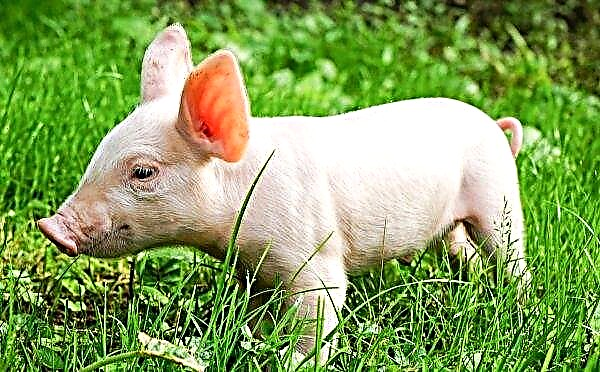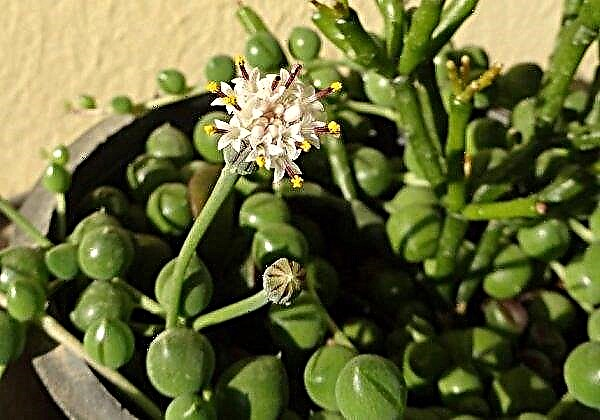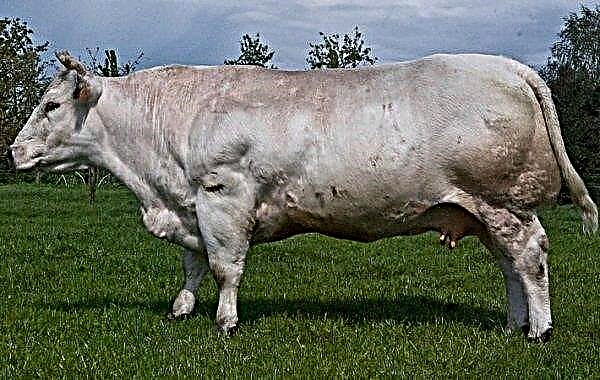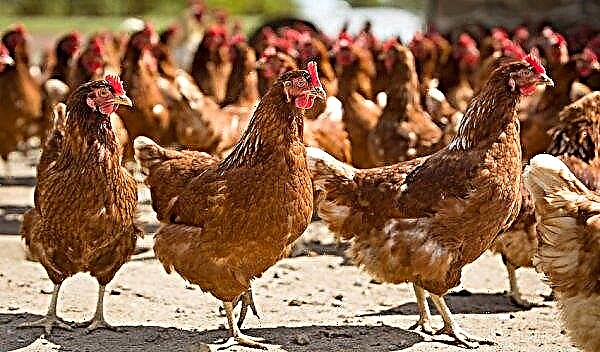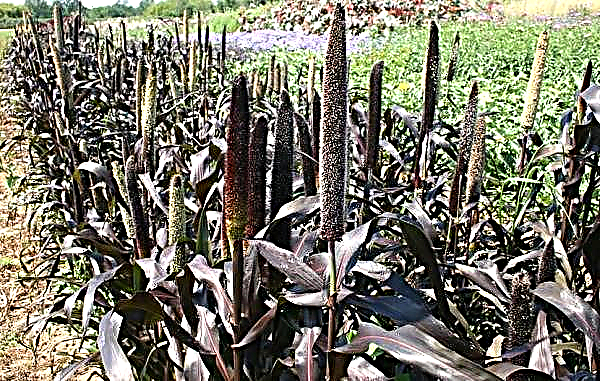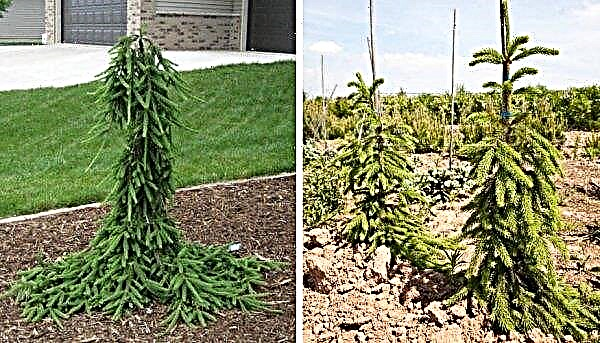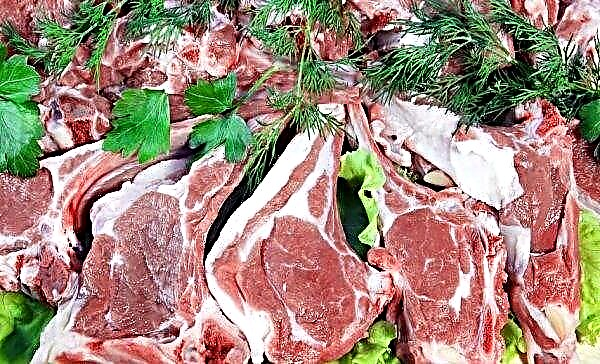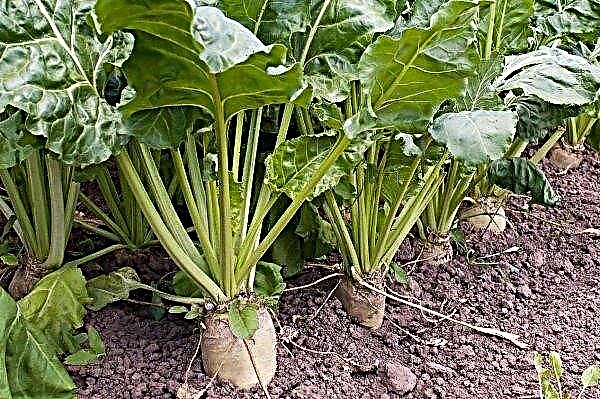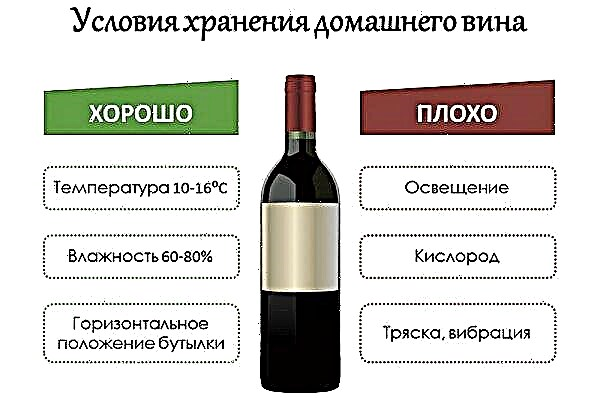Breeding geese for the sake of tasty meat does not lose popularity until today. One of the most popular breeds of these birds is considered Kholmogorsk. Birds are large, unpretentious in maintenance and quickly gain weight, and their feathers and down are highly valued in light industry enterprises. The article describes the main characteristics of the breed, the conditions for keeping birds and the features of caring for them, as well as the rules for feeding adult individuals and chicks.
Story
Kholmogory geese were bred in the 19th century in the homonymous settlement of Kholmogory, located in central Russia. Locals received this breed as a result of crossing representatives of local and Chinese breeds of geese. Selecting the best representatives in the process of crossing, they got hardy large birds, which easily adapted to any environmental conditions. In the 30s of the last century, the breed of Kholmogory was considered lost, but experienced breeders were able to revive it. Now these birds can be found in many households and farms.
Important! The main differences between the representatives of this breed from other geese is the curved yellow-orange beak and the presence of a special fold under it, called «wallet».
Breed description
Kholmogoryts are strong and hardy. Their physique and dense plumage allow them to tolerate the cold season. There are two types of birds - white and gray (piebald).
External characteristics
Kholmogorsk residents of strong physique and large sizes. There are two fat folds on the stomach, and on the head there is a special cone-shaped growth that becomes noticeable when the bird reaches 3 years of age. In individuals of white color, it is orange, and in gray and piebald ones, it is dark. A summary table of the external characteristics of Kholmogoryts is presented below.
| Head | Large, elongated, with a cone-shaped growth of orange or dark color |
| Neck | Long, with a beautiful bend |
| Torso | Large and massive |
| Chest | Wide, round |
| Legs | Well developed |
| Paws | Wide, orange |
| Plumage color | White, pied or gray. |
Dimensions and Weight
By weight, Kholmogorsk geese have an advantage over representatives of other breeds. Males can gain weight up to 12 kg., Adult females weigh about 8 kg. The chicks of Kholmogorsk residents grow very quickly and already at 9 weeks weigh about 4 kg. Representatives of this breed are very large, with a long horizontal trunk and large breasts that protrude forward.
Did you know? The average life expectancy of Kholmogorsk geese is 17 years.
Character
The character is calm, balanced. Representatives of this breed get along well with other inhabitants of the house and do not provoke them to conflict. Kholmogorskese males, defending their herd, can sometimes hiss at a person or animals, but, in general, the behavior of the birds is very friendly.
Pros and cons of the breed
Kholmogorsk geese are one of the oldest breeds of poultry. Their popularity among poultry farmers is explained by the positive qualities of the Kholmogorsk residents.
- The main advantages of the breed include:
- fast weight gain by young individuals;
- persistent immunity to disease;
- the possibility of keeping birds in the pasture;
- unpretentiousness in the maintenance and feeding;
- quality meat and fat;
- the value of fluff and feathers;
- well-developed maternal instinct in females.
- The disadvantages of the breed:
- low egg production rates in females;
- high weight of geese, as a result of which females can crush eggs while hatching.
How to distinguish a goose from a gander
Determining the gender of representatives of this breed at an early age is quite difficult. But there are several popular ways to distinguish a gander from a goose:
- Biological. The gosling should be put on its back and examined by its cesspool. In males, you can notice a small penis in the form of a red process.
- Height and body size. Male chicks are slightly taller than females, and their hull is tighter.
- Behavior. Little females are calm and almost noisy. Male chicks, on the contrary, constantly scurry around and squeak.
- Reaction to danger. If you frighten the chicks, then the gander instinctively will crank its neck up, and the geese will snuggle up to the ground.
- Flipping. It is necessary to take the chick by its paws, turn it upside down, and then sharply return it to its previous position. The female will have no reaction to this procedure, and the males will bend and pull their necks to their paws.
The basic rules for choosing good individuals
In order not to have trouble with self-breeding chicks of Kholmogorsk, you can immediately buy the right amount of young individuals. Survival of goslings with a good content is very high. Here are a few rules on how to choose good representatives of this breed:
- Pay attention to the activity of birds. Young individuals of Kholmogory are always in motion.
- Chicks should have a good appetite. If you give them food, then healthy goslings immediately run up to eat it, while weak goslings will remain on the sidelines and will not show interest in food.
- Young individuals begin to fuss during loud noises or noise nearby.
- The fluff in healthy individuals is shiny and evenly covers the body of goslings. There should be no bare patches of skin.
- The belly of goslings should be flat and rounded.

Home breeding and care
Kholmogorsk geese belong to poultry breeds for which specific conditions of keeping or a special feeding regimen are not required. To make the birds feel good, it is enough to adhere to the general recommendations for caring for them and remember the simple rules for keeping geese of this particular breed.
Did you know? Little chicks of the Kholmogorsk geese do not know how to independently rise after falling on their backs and can die. Therefore, they need to help rise.
Content
For successful breeding of Kholmogorye, the poultry breeder needs to take care of the proper arrangement of a suitable room for them and the organization of bird walking. Any farmer should know the basic principles of arranging a house for keeping Kholmogorsk geese:
- Sizes of the house. For one adult, at least 1 square meter of space must be allocated. The size of the premises for birds is determined based on the total number of geese in the herd.
- Clean and dry litter. Depending on the season, straw, sawdust or peat are used. It is necessary to ensure that the litter is not damp. In cold weather, this can cause a cold in geese, and in summer - lead to a deterioration in the quality of their valuable plumage. Wet litter is removed and replaced with dry.
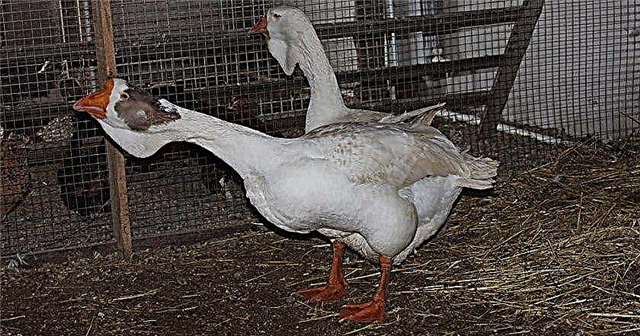
- Feeders for various types of feed. Grain and feed to birds are poured into wooden containers, and for wet food, metal feeders are used, which are easier to wash. All feed containers are placed at a height of 50 cm from the ground. Depending on how many birds can go to the feeder at the same time, their number is calculated to feed the entire herd.
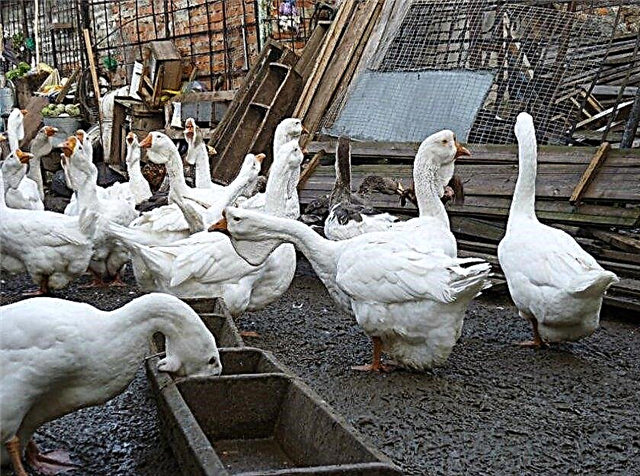
- Drinking bowls. They can be made of metal or wood and can be of various shapes. All water tanks in the guslinnik should be roomy enough to have enough for the whole herd of geese. Securely place the drinking bowls for birds so that geese do not spill water on the litter.
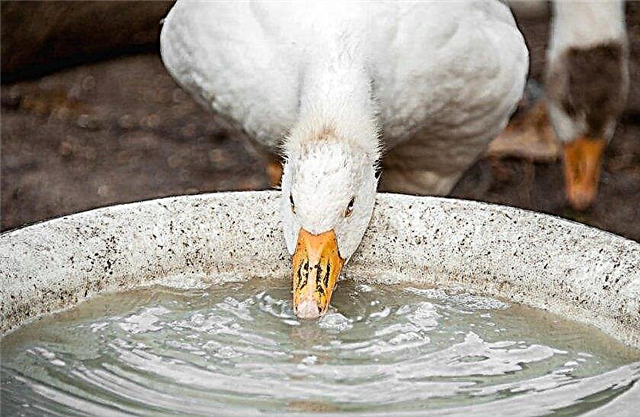
- Nests. Since the females of Kholmogorsk are very large, the nests must be made large and spacious. A goose can accidentally flip a nest when it crawls in or out of it, so they need to be securely fixed.
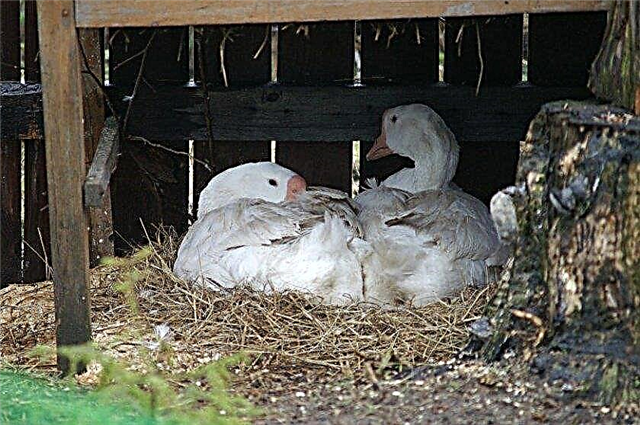
- Humidity and ventilation. There should be no dampness in the gusyatnik. This can lead to disease in the stock. The room should be well ventilated so that the air in it does not stagnate. There may be enough windows and doors to ventilate the house, but in large rooms it is better to install a separate ventilation system. Kholmogorsk residents should be protected from drafts.
- Air temperature. In summer, it is recommended to leave Kholmogorsk residents to spend the night in a simple design on the street with a canopy from the rain and mesh walls. In winter, the temperature in the house should be at least -4 ° C so that the birds are warm.
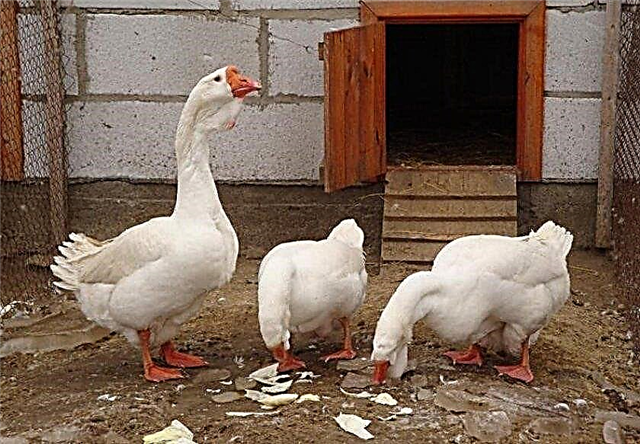
- Lighting. To improve egg production in winter, you need to extend the duration of daylight hours with the help of artificial lighting. The lamps must be turned on early in the morning before sunrise and after sunset until 20:00.
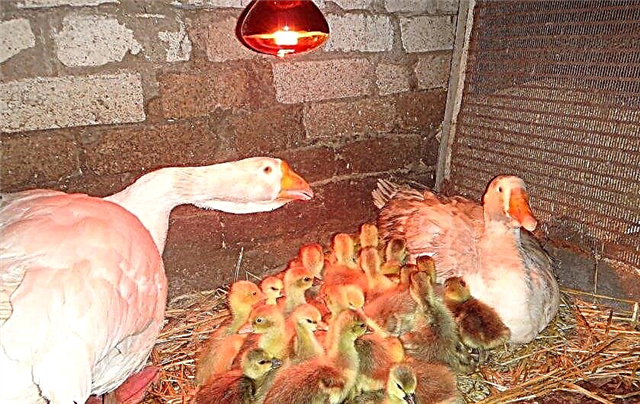
- Walking area. For walking one adult, a space of about 6 sq.m. is required. Birds need fresh air, so you need to equip a walking yard next to the house. The duration of the walk depends on weather conditions and air temperature. In winter, birds are released outside for a short time.

Important! It is best to use a tree to build a poultry farm for the winter - it retains heat well and is an environmentally friendly material.
In summer
When warm, keeping Kholmogorsk geese is the easiest. In summer, a significant part of the diet of birds is fresh grass, and even an ordinary canopy is enough for an overnight stay. Additional recommendations for the maintenance of Kholmogorye in the summer are:
Additional recommendations for the maintenance of Kholmogorye in the summer are:
- during the day, birds need to be driven out to the pasture, where they eat fresh grass;
- in the heat you need to provide constant access to water;
- if there is no natural reservoir nearby, then drinking bowls and large tanks with water for bathing birds are placed under the canopy;
- as a goslingnik in the summer you can use only a canopy from the sun or a simple wooden structure of the appropriate size, the walls of which are made of mesh or roofing material, and the roof is made of battens;
- litter in the house should always be clean. To change the flooring in the summer was not difficult, only sawdust, sand and straw are used.
Important! For well-being, birds need a body of water or a large, water-filled tank in which they can swim.
In winter
Kholmogorsk geese tolerate low temperatures well. Thick plumage and stable immunity allow them not to freeze in the cold season and prevent diseases. But there are some rules for keeping Kholmogoryans in winter:
- for wintering, geese need a house or any suitable space for it;
- in the gooseneck should be dry;
- the walls of the room must be covered with plaster;
- on the floor there is a warm litter of peat and straw;
- good ventilation, lack of drafts;
- protection of the house from predators.

Feeding
Kholmogorsk residents are not picky about feeding, so their diet is no different from the diet of geese of other breeds. But some foods can be harmful. Kholmogorsk geese cannot be fed:
- some herbs (sedge, goose foot, cuff);
- freshly picked rye grains;
- sprouted potatoes;
- immature vegetables.
Did you know? In summer, an adult goose eats up to 2 kg of fresh grass per day in a pasture.
Adults
In order for the Kholmogoryans not to get sick in the winter and feel good in the summer, they need to be given enough feed. Adult representatives of this breed can be fed:
- fresh grass (in the summer);
- grain
- finely chopped vegetables (carrots, beets, boiled potatoes);
- compound feed;
- grass meal (in winter);
- cottage cheese and raw eggs (for gander during the breeding season);
- vitamin supplements (this includes vitamin D, yeast, fish oil);
- chalk and gravel.
 They feed birds up to three times a day, alternating dry and juicy food. There should always be a sufficient amount of clean drinking water in the drinkers.
They feed birds up to three times a day, alternating dry and juicy food. There should always be a sufficient amount of clean drinking water in the drinkers.Young animals
Feeding the chicks of the Kholmogorsk geese has its own characteristics and begins on the second day of life. On the first day after birth, the goslings still absorb the egg yolk, so you do not need to feed them. Chicks are unpretentious in food, they are usually given the following types of food:
- ready balanced mixed feed;
- grated boiled egg;
- crushed grain;
- cottage cheese;
- grass and cake.
Important! When preparing food for goslings, you need to ensure that it does not stick together. A dense mixture can clog the nasal passage of the chick.
In summer, chicks of the Kholmogorsk geese must be given chopped fresh herbs. Goslings with pleasure eat nettles, clover leaves, wheat grass, alfalfa. You need to choose a juicy and soft grass with thin stems so that the chicks can chew it. In the winter, fresh greens are replaced with finely chopped boiled vegetables.
After the goslings are 14 days old, fresh vegetables are added to their diet, grated on a fine grater. In winter and early spring, avitaminosis may occur in chicks. Therefore, for good growth and normal development of the body, they need to be given foods containing vitamins:
- shell rock and chalk - contain calcium necessary for the chicks;
- fish oil - serves as a source of vitamins A and D;
- herbal flour - contains fiber, protein and minerals;
- sprouted grains of oats and barley - contain vitamin C.

Products prohibited for feeding chicks include:
- stale stale food - can cause digestive upset;
- grain with mold - causes poisoning of the body;
- rough grass with stiff thick stems - it is difficult to digest the chicks' stomach.
Disease Prevention and Immunity
Kholmogorsk residents are birds with strong immunity. But under the wrong conditions of keeping colds and rickets can not be avoided. If the birds live in damp and mud, then in their dense plumage parasites can start. And if the Kholmogorsk geese are not properly fed, digestive upset occurs.
To prevent the occurrence of these diseases, it is necessary to carry out such measures:
- regular walking of birds (especially in sunny weather);
- the presence of a nearby body of water or a large capacity with water for swimming (in summer);
- vitamins and minerals in the diet;
- daily room cleaning, litter change;
- regular treatment of bird cages with disinfectants;
- a sufficient amount of free space for birds;
- high-quality and fresh food, balanced diet.
 Kholmogorsk geese are an excellent option for poultry farmers who want to get a lot of tasty goose meat, healthy fat and valuable fluff. And unpretentiousness to the conditions of detention and strong immunity makes the breeding of these birds profitable.
Kholmogorsk geese are an excellent option for poultry farmers who want to get a lot of tasty goose meat, healthy fat and valuable fluff. And unpretentiousness to the conditions of detention and strong immunity makes the breeding of these birds profitable.








